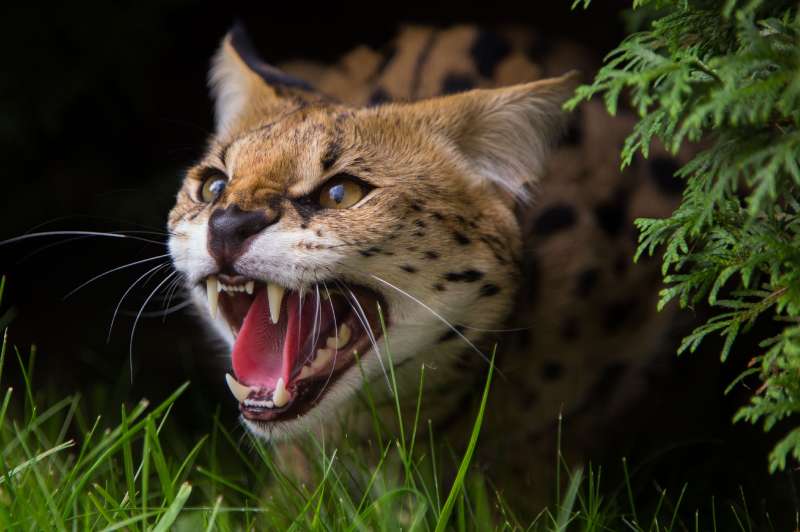Servals

Scientific Name: Leptailurus serval
- Habitat: Native to Africa, servals thrive in savannas, wetlands, and areas close to water bodies, avoiding dense equatorial jungles.
- Diet: Carnivorous, primarily hunting rodents, birds, frogs, insects, and fish.
- Physical Characteristics: Distinct for their slender bodies, long legs, and large ears, servals have a golden-yellow to buff coat spotted and striped with black. They stand about 54-62 cm (21-24 inches) at the shoulder.
- Lifespan: In the wild, servals live for about 10 years, but they can reach up to 20 years in captivity.
- Reproduction: Servals are solitary animals, coming together only to mate. Females give birth to a litter of one to four kittens after a gestation period of about 74 days.
- Conservation Status: Listed as Least Concern by the IUCN, though their population is affected by habitat loss and hunting for their fur.
Servals at Chipangali

Alvin, Simon and Theo
Species: Servals
Age on Arrival: Approx. 4 weeks
Arrival Date: 13 March 2023
Sex: 2 Males, 1 Female
Story: Rescued after being found abandoned on a farm, the serval siblings Alvin, Simon, and Theo’s arrival at Chipangali heralded a new chapter of care and rehabilitation. Their rescue emphasizes the sanctuary’s vital role in providing refuge for the lost and the vulnerable, showcasing the importance of sanctuary spaces in the broader context of wildlife conservation. As they grow under the careful watch of the sanctuary staff, their journey from fragile infants to thriving adults will serve as a reminder of the sanctuary’s impact on individual lives.

Ceila
Species: Serval
Age on Arrival: Approx. 6 months
Arrival Date: 8 March 2015
Sex: Male
Ceila’s Story: Ceila’s adventure began atop a palm tree in Centenary Park, from which he was rescued and brought to Chipangali for a health assessment. Shortly after his arrival, a concerning change was observed as his back legs began to bow, a direct result of his audacious leap from the palm tree. X-rays revealed multiple fractures, leading to a series of treatments. However, his recovery, though significant, left his legs without the full strength required for survival in the wild, anchoring him to a life within the safety of the sanctuary.

Bam-Bam
Species: Serval
Age on Arrival: Approx. 4 weeks
Arrival Date: 22 May 2020
Sex: Male
Bam-Bam’s Story: Under the cover of night, Bam-Bam and his sister were discovered in a field, mistakenly identified as leopard cubs by a concerned farmer. The news of their plight quickly spread, prompting Ryan and Kevin to embark on a rescue mission amidst the cold. With the little ones in peril, they were brought back just before midnight, a journey marked by urgency and care. The Wilson family and volunteers nurtured them with love, feeding them kitty milk replacer and quail, a testament to their dedication. As Bam-Bam grew, his playful nature led him to an enclosure suited for his spirited antics. However, the loss of his sister by his own doing marked a turn in his story, rendering him too habituated to return to the wild. Despite this, Bam-Bam’s affectionate demeanor shines through during supervised interactions, a reminder of his complex nature as a wild yet tender animal.
Get Involved!



